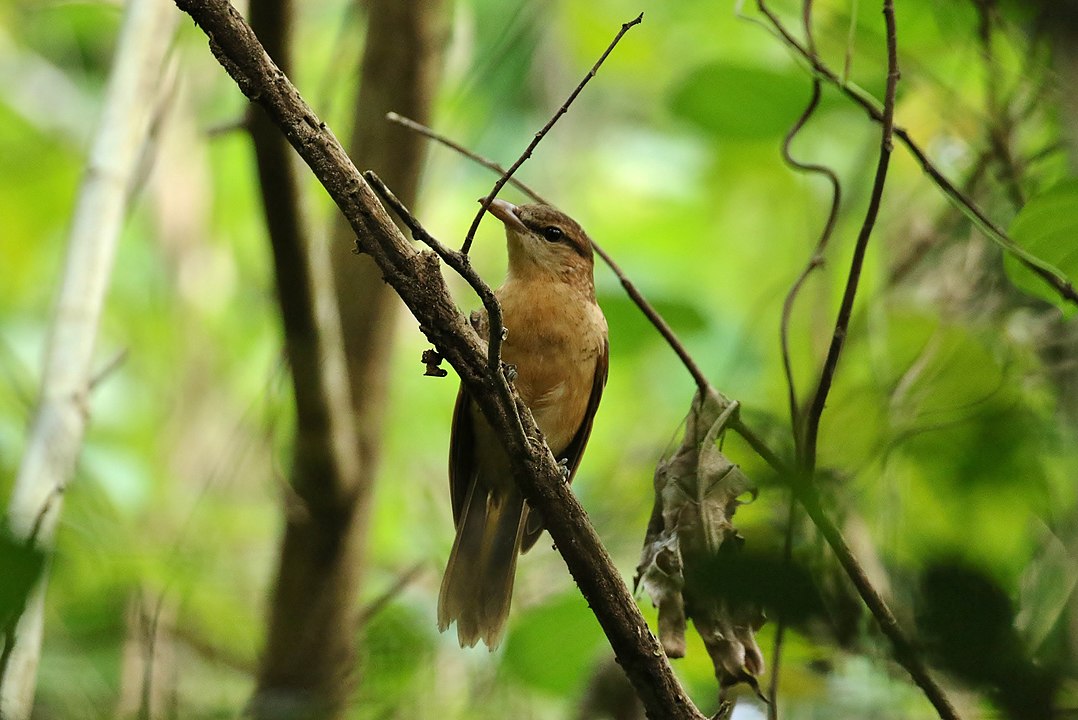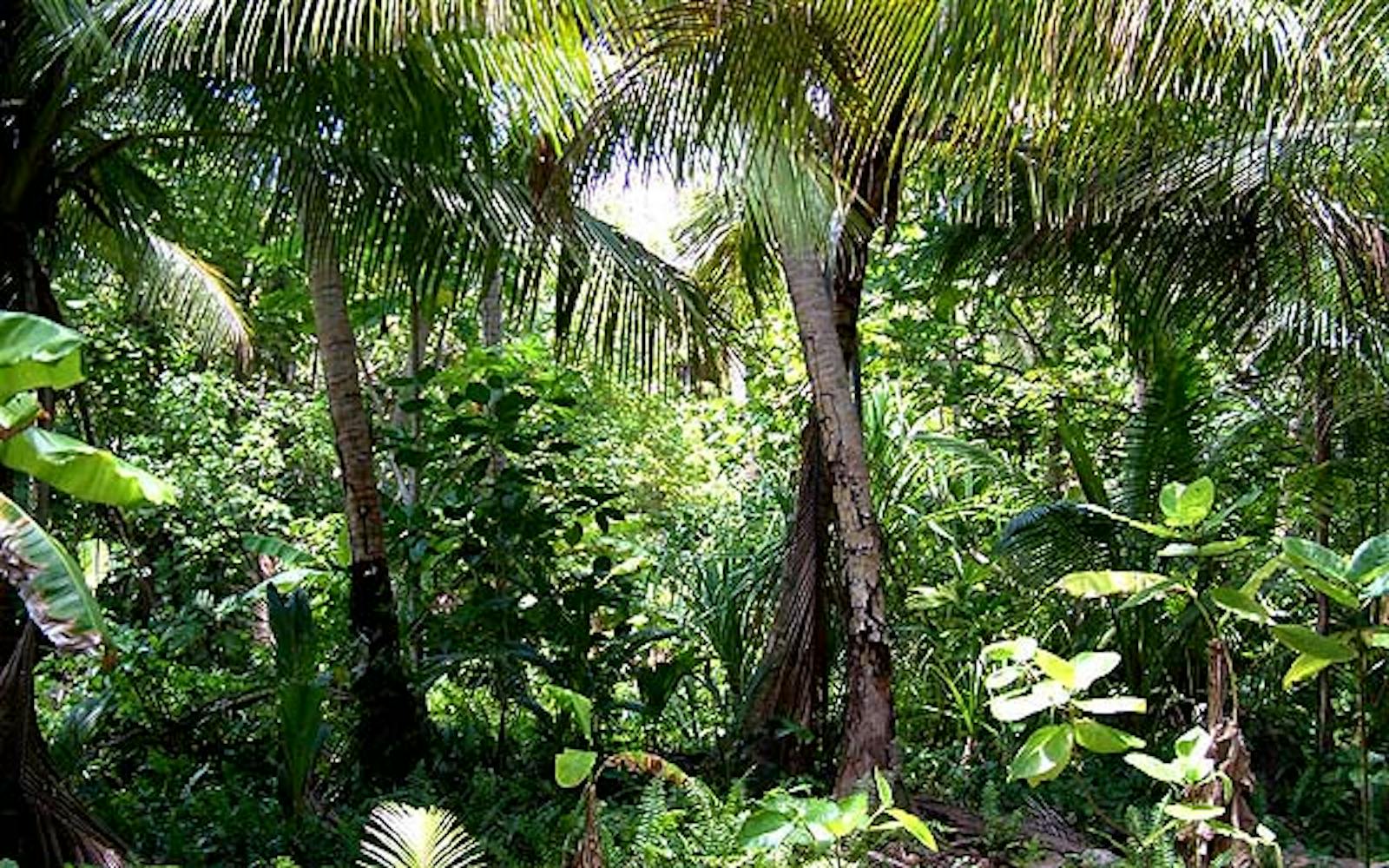Yap Tropical Dry Forests
The ecoregion’s land area is provided in units of 1,000 hectares. The conservation target is the Global Safety Net (GSN1) area for the given ecoregion. The protection level indicates the percentage of the GSN goal that is currently protected on a scale of 0-10. N/A means data is not available at this time.
Bioregion: Palau & Caroline Tropical Islands (OC8)
Realm: Oceania
Ecoregion Size (1000 ha):
10
Ecoregion ID:
638
Conservation Target:
92%
Protection Level:
0
States: Federated States of Micronesia
Known in tourist circles for its giant stone money, Yap has other treasures in its remaining forests, including the bright black and white Yap monarch that is unique to the island.
The Yap Islands group is located about 450 km northeast of Palau. Yap has a gentle topography, rising to a maximum elevation of about 175 m. Rainfall is seasonal, with a distinct dry season lasting from January through March. Strong typhoons occur regularly.
Little original forest remains after millennia of settlement and subsistence agriculture on these small islands. Original habitat is believed to have been broadleaf deciduous forests, swamps, mangroves, and some limited natural savannas. Upland forests were comprised of Celtis sp., Buchanania engleriana, Campnosperma brevipetiolata, Trichospermum ikutai, Garcinia rumiyo, Pentaphalangium volkensii, Terminalia catappa, Pouteria obovata, Pangium edule, Aidia cochinchinensis, and Eurya japonica.

The flagship species of the Yap Tropical Dry Forests ecoregion is the yap monarch. Image credit: Creative Commons
Shrubs include species of Psychotria, Crateva, Streblus, Glochidion, Leea, Hibiscus, Polyscias, and Ixora. Forests on exposed limestone (upraised reefs eroded into karst) have distinct plant communities, with many endemic species, that grow in pockets of soil in the hard rock. Most remaining forest on Yap is secondary growth with a mixture of native and cultivated species.
Mangrove forests with 15 species of tree fringe the islands in many areas and have a flora similar to those on Palau. Yap supports a distinct natural savanna community with a boxlike shrub, Myrtella bennigseniana, which is restricted to the savannas of Yap and Guam to the north. The flora has been likened to an attenuated version of that in Palau.
Even with its small size, Yap still support several endemic plants, including Drypetes yapensis, D. carolinensis, Trichospermum ikutai, Hedyotis fruticosa, Timonius albus, Casearia cauliflora. Serianthes kanehirae variety yapensis, Garcinia rumiyo, Buchanaria engleriana, and the lavender flowered Hedyotis falanruwae.

Yap Cicadabird. Image credit: thibaudaronson, Creative Commons
There are two endemic birds: the crisp black and white Yap monarch and Yap olive white-eye, as well as four additional restricted-range bird species shared with nearby islands. The Yap cicadabird may be elevated from a subspecies of the common cicadabird to a separate, endemic species. Yap’s common moorhen may also be a threatened subspecies.
The Yap flying-fox is unique to Yap, though closely related to the Marianas flying fox. Two endemic fruit bat subspecies occur in Yap State, Pteropus mariannensis yapensis and P. m. ulithiensis. Several widespread skinks and geckos occur in the island group, with a giant Micronesian gecko Perochirus scutellatus being found only on Ulithi and Kapingamarangi.
Today, secondary and highly degraded forests cover 40% of the total land area. The original forest was cleared through settlement, swidden agriculture, and burning. Man-made savannas now cover extensive areas. Dry season forests contribute to retarding regeneration of forests. The endemic birds of Yap are threatened by introduced rats, mice, and feral cats, and exotic bird diseases brought by the introduced tree sparrow. Larger pigeons, such as the Micronesian imperial pigeon, and flying fox are threatened by hunting.
Currently, there are no legally protected areas in the Yap Islands. All land is traditionally owned. Thirty-two Areas of Special Biodiversity Significance (ABS) have been named throughout Yap State. Four areas within this set of ABS have recently been proposed as protected areas, with the Dalipebinau School Forest ABS being the only terrestrial one.
The priority conservation actions for the next decade are to: 1) establish community-based protected areas for vulnerable limestone forests and older forests with many endemic species; 2) strengthen protection of mangroves as these forests maintain favorable closed-canopy habitat for endemic bird; and 3) strengthen preventive measures to keep the brown tree snake and little red fire ant from being introduced Yap.
Citations
Mueller-Dombois D, FR Fosberg, editors. 1998. Vegetation of the Tropical Pacific Islands. Springer-Verlag, New York.
Yap State FSM. 2004. Yap State Biodiversity Strategy and Action Plan. The Yap State Environmental Stewardship Consortium, Yap.
Zicus S. 2018. Yap tropical dry forest. Accessed 1 June 2018 at https://www.worldwildlife.org/ecoregions/oc0204



